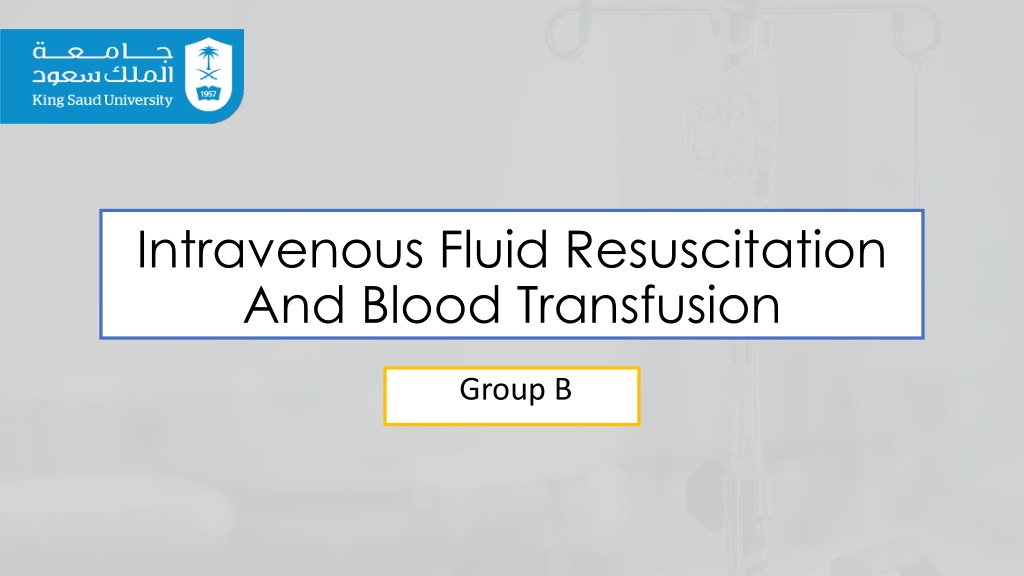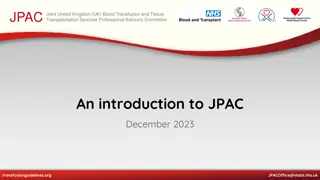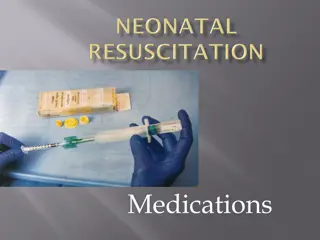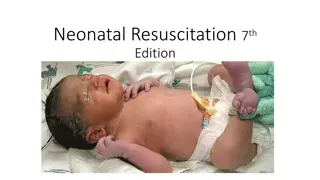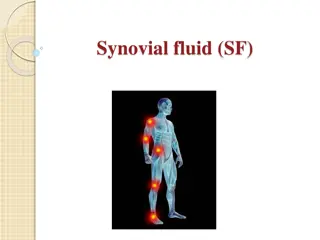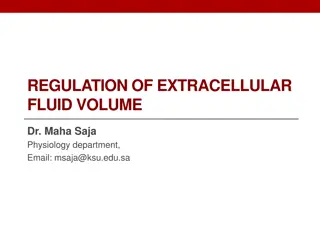Understanding Intravenous Fluid Resuscitation and Blood Transfusion in Clinical Practice
Intravenous fluid resuscitation and blood transfusion are crucial components of patient care, involving the direct administration of fluids and electrolytes to maintain proper fluid balance. When calculating the volume of fluid to be replaced, various factors must be considered, including maintenance fluid requirements, insensible losses, and special additional losses like blood loss and bowel preparation. Understanding the patient's body weight, electrolyte levels, and fluid compartments is essential in determining the appropriate replacement volume.
Download Presentation

Please find below an Image/Link to download the presentation.
The content on the website is provided AS IS for your information and personal use only. It may not be sold, licensed, or shared on other websites without obtaining consent from the author. Download presentation by click this link. If you encounter any issues during the download, it is possible that the publisher has removed the file from their server.
E N D
Presentation Transcript
Intravenous Fluid Resuscitation And Blood Transfusion Group B
Fluid replacement: The process of giving fluid and substances (electrolyte) directly into a vein they might be: volume expanders (crystalloids, colloids), blood based products, and medications. There are three essential components must be in consideration in case of fluid and electrolyte replacement (Pre/intra/post Operatively) which are: involves meeting the requirements for fluid and electrolyte intake and the deficit that are present provision for ongoing and additional losses that occur during the therapy Maintenance Resuscitation Replacement
What are the compartment that must be considered when calculating?
The patient body weight is 80 kg, 8 hours fasting with bowel preparation blood loss 500 ml and urine output is 400 ml. 16L (Has high 32L Intracellular Fluid: 2/3 (40%) of TBW. level = 150 / low Na = 10) Extracellular Fluid: 1/3 (20%) of TBW. Na level = 140/ Low K =4) (Has high K Total body water content= 60% of TBW. 48L Interstitial Fluid: (15%) of extracellular water. Intravascular Fluid (plasma): (5%) of extracellular water.
Discuss the volume of fluid that should be replaced?
The following factors must be taken into account: Maintenance fluid requirements Insensible losses such as evaporation of water from respiratory tract, sweat, feces, urinary excretion. Occurs continually. Adults: approximately 1.5 ml/kg/hour NPO and other deficits: NG suction, bowel preparation Third space and invisible losses. Replacement of blood loss Special additional losses: diarrhea Blood Loss
The following factors must be taken into account: Maintenance fluid requirements Insensible losses such as evaporation of water from respiratory tract, sweat, feces, urinary excretion. Occurs continually. Adults: approximately 1.5 ml/kg/hour NPO and other deficits: NG suction, bowel preparation Third space and invisible losses. NPO deficit = number of hours NPO x maintenance fluid requirement. Bowel prep may result in up to 1 L fluid loss. Replacement of blood loss Special additional losses: diarrhea Blood Loss
The following factors must be taken into account: Maintenance fluid requirements Insensible losses such as evaporation of water from respiratory tract, sweat, feces, urinary excretion. Occurs continually. Adults: approximately 1.5 ml/kg/hour NPO and other deficits: NG suction, bowel preparation Third space and invisible losses. Replacement of blood loss Special additional losses: diarrhea Superficial surgical trauma: 1-2 ml/kg/hr Minimal Surgical Trauma: 3-4 ml/kg/hr - head and neck, hernia, knee surgery Moderate Surgical Trauma: 5-6 ml/kg/hr - hysterectomy, chest surgery Severe surgical trauma: 8-10 ml/kg/hr (or more) - AAA repair, nephrectomy Blood Loss
The following factors must be taken into account: Maintenance fluid requirements Insensible losses such as evaporation of water from respiratory tract, sweat, feces, urinary excretion. Occurs continually. Adults: approximately 1.5 ml/kg/hour NPO and other deficits: NG suction, bowel preparation Third space and invisible losses. Replacement of blood loss Replace 3 cc of crystalloid solution per cc of blood loss (crystalloid solutions leave the intravascular space) Special additional losses: diarrhea When using blood products or colloids replace blood loss volume per volume. Blood Loss
Daily requirement 35cc/kg 80 x 35=2800 Fluid deficit (NPO): total deficit: (Replace 1/2 first hour, 1/4 2nd hour, 1/4 3rd hour). 1.5 ml/kg/hr x 8 hrs = 960 ml + 1000 ml for bowel preparation = 1960 ml NPO and other deficits: 1.5 X 8 hr. (Fasting hours) = 960+1000 (bowel preparation) = 1960 Third space and invisible losses = 8 ml/kg/hr. (Major Surgery). Replacement of blood loss 4- 500 (every one cc of blood = 3 crystalloid or 1 cc if colloids) = 1500ml Urine output 5- at least 1.0 ml/kg/hour = 400ml
Sunken eyes absence of JVP dry skin Dry tongue and mucus membranes coma What are the signs of preoperative hypovolemia? postural hypotension oliguria- organ failure tachycardia depressed level of consciousne ss
How to calculate the fluid replacement in the intraoperative period all of which take into consideration the preoperative fluid deficits?
Preoperative Fluid Loss Replacement : 500 Cc Multiplied By 3 = 1500 Cc Plus Urine Output 400 Cc Fluids must be given based on an estimation of the following fluid losses prior to start of anesthesia, maintenance requirements, normal fluid losses that occur during surgery, and response to unanticipated blood loss. Maintenance : 80kg X1.5 X 8 Hours = 960 Cc Anticipated Surgical Fluid Loss : Severe Tissue Trauma In Bowel Resection 6-8cc/Kg/Hr 8x80= 640 Cc/Hr For unanticipated blood loss give 3 cc of crystalloid for each 1 cc of blood.
What is your choice of fluid for replacement Crystalloid vs Colloids? crystalloid
Thank you Any Questions ?
